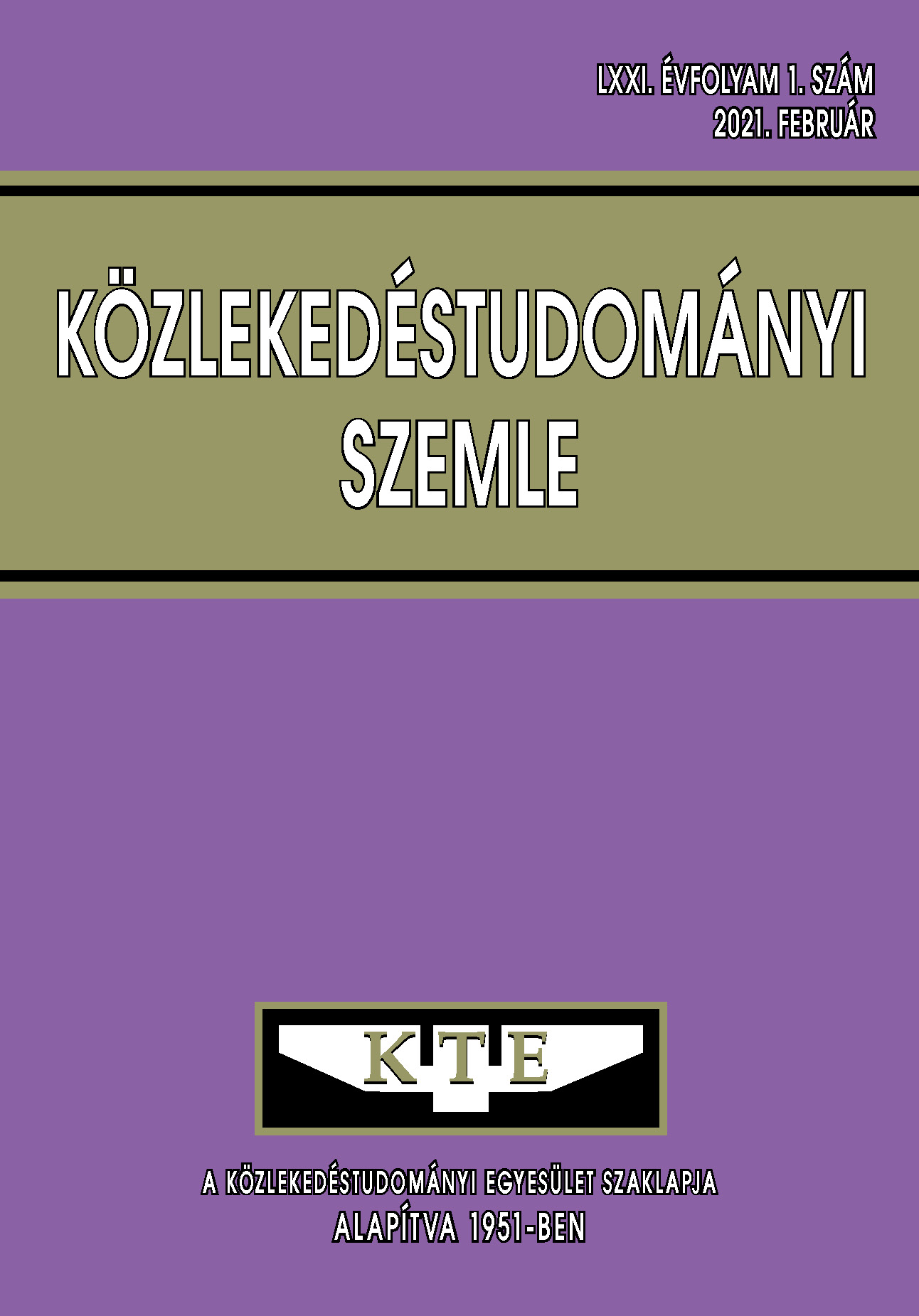An overview of the European regulatory environment on unmanned aircraft systems Part 2: An introduction of the specific and certified categories
Abstract
The objective is to provide a clear overview and wide description of the 2019/947 commission implementing regulation on the rules and procedures for the operation of unmanned aircraft systems, based on the delegated regulation 2019/945., developed by the European Aviation Safety Agency (EASA) and adopted by the European Commission in 2019, thus helping to prepare for the application in Hungary of the regulations at the state level, the entry into force of which was postponed from 1 July 2020 to 31 December 2020 due to the COVID-19 pandemic. At the time of the writing of this paper (July-August 2020), the amendments 2020/639 and 2020/1058 were also published, which prescribe the establishment of two additional standard scenarios (STS-01 and STS-02) and two new unmanned aircraft systems classes (C5 and C6) assigned to them. The adequate integration of unmanned aircraft systems into the airspace is a key pan-European task and a common interest.
References
European Aviation Safety Agency (EASA); One step closer to harmonised rules for safe drone operation in Europe; 01. march 2019.; https://www.easa.europa.eu/newsroomand-events/news/one-step-closerharmonised-rules-safe-drones-operationeurope
European Aviation Safety Agency (EASA); European Commission paves the way for safe, secure and green drone operations; 12. march 2019; https://ec.europa.eu/transport/modes/air/news/2019-03-12-drones_en
European Aviation Safety Agency (EASA); EU wide rules on drones published; 11. june 2019.; https://www.easa.europa.eu/newsroom-and-events/news/eu-wide-rulesdrones-published
Civil drones (Unmanned aircraft) – regulatory framework background and timeline; https://www.easa.europa.eu/easaand-you/civil-drones-rpas#0
EASA; Acceptable Means of Compliance (AMC) and Guidance Material (GM) to Commission Implementing Regulation (EU) 2019/947); 09. October 2019. Issue 1; https://www.easa.europa.eu/sites/default/files/dfu/AMC%20%26%20GM%20to%20Commission%20Implementing%20Regulation%20%28EU%29%202019-947%20%E2%80%94%20Issue%201.pdf
European Aviation Safety Agency (EASA) (2019), Commission Delegated Regulation (EU) 2019/945 of 12 March 2019 on unmanned aircraft systems and on thirdcountry operators of unmanned aircraft, https://eur-lex.europa.eu
European Aviation Safety Agency (EASA) (2019), Commission Implementing Regulation (EU) 2019/947 of 24 May
on the rules and procedures for the operation of unmanned aircraft , https://eur-lex.europa.eu
European Aviation Safety Agency (EASA) (2020), Commission Implementing regulation (EU) 2020/746 of 4 June 2020 amending Implementing Regulation (EU) 2019/947 as regards postponing dates of application of certain measures in the context of the COVID-19 pandemic https://eur-lex.europa.eu/legal-content/EN/TXT/?ri=CELEX%3A32020R0746
European Aviation Safety Agency (EASA) (2020), Commission Delegated regulation (EU) 2020/1058 of 27 April 2020 amending Delegated Regulation (EU) 2019/945 as regards the introduction of two new unmanned aircraft systems classes https://eur-lex.europa.eu/eli/reg_del/2020/1058/oj
European Aviation Safety Agency (EASA) (2020), Commission Implementing Regulation (EU) 2020/639 of 12 May 2020 amending Implementing Regulation (EU) 2019/947 as regards standard scenarios for operations executed in or beyond the visual line of sight https://eur-lex.europa.eu/legal-content/EN/TXT/?uri=CELEX%3A32020R0639
Joint Authorities for Rulemaking of Unmanned Systems (JARUS) (2019) Specific Operations Risk Assessment (SORA) http://jarus-rpas.org/sites/jarus-as.org/files/jar_doc_06_jarus_sora_v2.0.pdf
Articles published electronically are open access (OJS), freely available online and can be downloaded. Authors of articles are not charged any publication or publishing costs (APC). Users have the right to read, download, copy, print, and search the articles, or share the full text with a link.
Authors must declare that their submission has not been previously published in another journal, that financial support has been acknowledged, and that the list of references is complete and accurate, including specification of URLs and DOIs (if available). When submitting a draft article, each author approves the submitted version. Authors guarantee that the article is their original work. Authors are required to participate in the peer review process, follow the advice of reviewers, meet the prescribed deadlines, and, if any, withdraw the submission or correct errors.
All submitted articles are subject to peer review, where the editors request an independent evaluation from at least one expert, ensuring that the reviewer(s) have no conflicts of interest with the authors. The final decision is made by the Editor-in-Chief, who takes into account the evaluations and the suggestions of the editors. The editors and reviewers treat the submission confidentially.
The publisher and editors are committed to maintaining high ethical standards and to preventing publications that involve research misconduct. They follow the COPE guidelines on such ethical issues.
The authors retain copyright and grant the journal the right of first publication under the Creative Commons License (https://creativecommons.org/licenses/by-nc-nd/4.0), which allows others to share the work, while acknowledging the authorship of the work and the first publication in the journal.
The journal archives all published articles, and the journal's owner, the Hungarian Society of Transportation Sciences, will continue to operate the database even if the journal ceases to be published.















